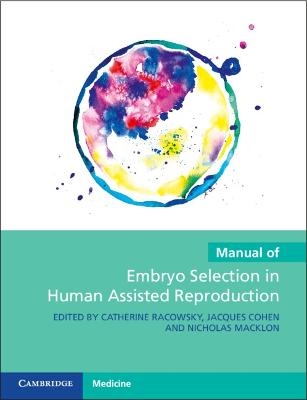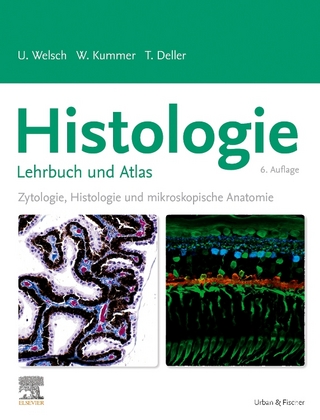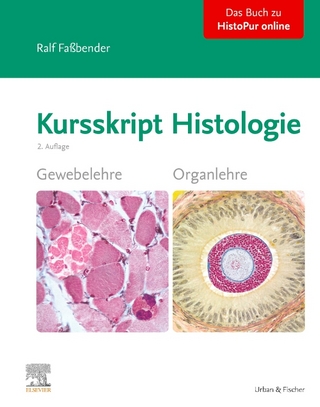
Manual of Embryo Selection in Human Assisted Reproduction
Cambridge University Press (Verlag)
978-1-009-01637-7 (ISBN)
Selecting the best embryo to transfer to the uterus is key to successful in vitro fertilization (IVF). A huge amount of research has been devoted to this topic and there are numerous methods used, from simple morphological assessment to molecular biological techniques to assess the genome and metabolism of the newly fertilized embryo. For many of these techniques, an adequate evidence base is lacking, and expert opinion is valuable. Clinical imperatives require ranking all embryos in a cohort according to their viability, thereby enabling the selection of the best embryo to optimize live birth outcome: a key indicator used to measure and rate IVF Clinics worldwide. This clear and informative manual will provide embryologists and clinicians with an overview of the tools now available to assist in embryo selection, as well as evidence for their efficacy and safety and the broader considerations that must underlie these important clinical decisions.
Dr. Catherine Racowsky is Professor Emerita of Obstetrics and Gynecolog, Harvard Medical School, was director of the IVF laboratory at Brigham and Women's Hospital for over twenty years and is currently a University Consultant for Hospital Foch, Suresnes, France. She received her Bachelors' degree from Oxford University, her Ph.D. from Cambridge University and undertook her post-doctoral fellowship at Harvard Medical School. She is Past President of the ASRM and is currently an Associate Editor for the Journal of Assisted Reproduction and Genetics, a Special Editor for Fertility and Sterility and an editorial board member of RBMOnline and F&S Science. Her research interests include investigating the regulation of meiotic maturation in human oocytes, the impact of mitochondrial function/dysfunction in the cumulus cells surrounding the oocyte on oocyte viability and expanding methodologies for assessing human embryo developmental competency. She has authored over 180 peer-reviewed papers, more than twenty-five chapters, and has co-edited eleven books. Dr. Jacques Cohen is co-founder of Althea Science, IVF 2.0 and The International IVF Initiative (i3). He has been affiliated as a clinical embryologist and laboratory director with leading clinics in Europe and USA. He was a co-founder of Reprogenetics and Life-Global, PGDIS and Alpha, scientists in reproductive medicine. He is advisory board member for TMRW, KindBody, Orchid Health, Haplome and The Special Situations Life Science Innovation Fund. He is emeritus Chief Editor of RBMO. Professor Nicholas Macklon is Group Medical Director of London Women's Clinic, UK and Visiting Professor at Zealand University Hospital, Denmark. After training in Scotland and taking the position of Head of the IVF Centre at Erasmus University Hospital in Rotterdam, he was appointed Professor and Chair of Reproduction and Gynaecology at Utrecht Medical Centre. He has since held Professor and Department Chair positions at the University of Southampton and the University of Copenhagen. A past member of the ESHRE Executive Committee and Associate Editor of Human Reproduction and HRU, he is currently Co-Editor in Chief of RBMO.
1. Introduction: why do we bother with embryo selection? Arne Sunde and Kersti Lundin; 2. Embryo developmental programming Virginia N. Bolton; 3. Embryo-maternal interactions Lois A. Salamonsen, Tracey A. Edgell, Guiying Nie, and Jemma Evans; 4. The sperm's role in embryo development Nahid Punjani, Russell P. Hayden and Peter N. Schlegel; 5. The Oocyte's role in embryo development David F. Albertini; 6. The laboratory's role in embryo development Dean Morbeck; 7. Handling of gametes and embryos Sharon T. Mortimer; 8. Noninvasive morphological selection of Oocytes Giovanni Coticchio, Elena Borini, Catello Scarica, and Andrea Borini; 9. Prospects for bioenergetics for embryo selection Jonathan Van Blerkom; 10. Static morphological assessment for embryo selection Thomas Ebner; 11. Dynamic morphological assessment for embryo selection Alison Campbell; 12. Noninvasive analysis of embryo nutrient utilization for embryo selection David K. Gardner, Laura Ferrick, Rebecca L. Kelley, and Yee Shan Lisa Lee; 13. Genomics for embryo selection Elpida Fragouli and Dagan Wells; 14. Biopsy techniques from polar body to blastocyst Danilo Cimadomo, Nicoletta Barnocchi, Letizia Papini, Federica Innocenti, Filippo Maria Ubaldi and Laura Rienzi; 15. Cell-free DNA analysis for PGT-A Luca Gianaroli, Silvia Azzena and Maria C. Magli; 16. What science may come for embryo selection? Paolo Rinaudo.
| Erscheinungsdatum | 06.02.2023 |
|---|---|
| Zusatzinfo | Worked examples or Exercises |
| Verlagsort | Cambridge |
| Sprache | englisch |
| Maße | 189 x 246 mm |
| Gewicht | 480 g |
| Themenwelt | Medizin / Pharmazie ► Medizinische Fachgebiete ► Gynäkologie / Geburtshilfe |
| Medizin / Pharmazie ► Medizinische Fachgebiete ► Laboratoriumsmedizin | |
| Studium ► 1. Studienabschnitt (Vorklinik) ► Histologie / Embryologie | |
| ISBN-10 | 1-009-01637-7 / 1009016377 |
| ISBN-13 | 978-1-009-01637-7 / 9781009016377 |
| Zustand | Neuware |
| Haben Sie eine Frage zum Produkt? |
aus dem Bereich


